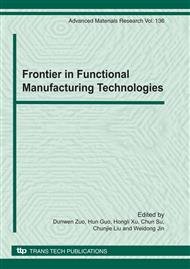p.10
p.14
p.18
p.23
p.28
p.33
p.39
p.43
p.48
Effect of Adding Er on Interfacial Reactions between Sn-3.0Ag-0.5Cu Solder and Cu Substrate
Abstract:
The formation and the growth of Cu-Sn intermetallic compound (IMC) layer at the interface between Sn-3.0Ag-0.5Cu-xEr(x=0, 0.1) solder and Cu substrate during soldering and aging were studied. The results show that Cu6Sn5 IMC is observed at the interface between solder and Cu substrate in all conditions. After aging for 120 h, the Cu3Sn IMC is then obtained. With increasing aging time, the scalloped Cu6Sn5 structure changes to a plate structure. The Cu3Sn film always forms with a relatively planar interface. By adding a small amount of the rare earth element Er (only 0.1%, mass fraction) into the Sn-3.0Ag-0.5Cu solder alloy, the growth rate of the Cu-Sn IMC at the interface of solder alloy system is decreased. When the time exponent is approximately 0.5, the growth of the IMC layer is mainly controlled by a diffusion over the studied time range.
Info:
Periodical:
Pages:
28-32
Citation:
Online since:
October 2010
Price:
Сopyright:
© 2010 Trans Tech Publications Ltd. All Rights Reserved
Share:
Citation:


